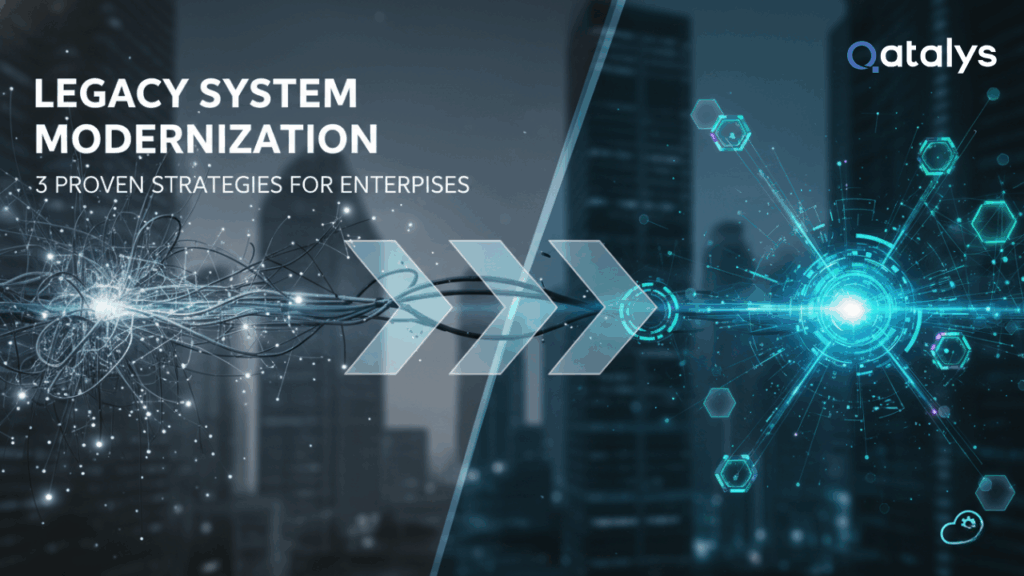In 2025, the modern CTO is no longer just a technology steward – they’re the architect of global scale, innovation velocity, and digital resilience. As enterprises accelerate AI adoption, platform modernization, and product-driven growth, Global Capability Centers (GCCs) have emerged as a strategic lever to execute faster, smarter, and with tighter control.
But setting up a GCC is not a plug-and-play operation. It’s a high-stakes, high-reward initiative that demands technical vision, cross-border coordination, and long-term planning. And the difference between success and friction often comes down to how the GCC is designed, built, and governed – right from day one.
This guide is written for CTOs and tech decision-makers looking to establish a GCC that isn’t just cost-efficient, but truly capability-driven. From defining the right setup strategy to avoiding common pitfalls, we’ll walk through the steps and best practices that separate functional GCCs from transformational ones.
Let’s dive in.
When (and Why) CTOs Should Consider a GCC
For CTOs leading high-growth roadmaps, building a Global Capability Center isn’t just a scaling tactic – it’s a strategic decision that impacts delivery velocity, talent access, IP control, and long-term innovation.
While GCCs were once seen as cost-saving extensions, today’s best-performing centers function as fully aligned, product-driven execution engines. But when does it make sense to build one?
Here are the scenarios where a GCC becomes the right move:
You’re scaling fast and need predictable delivery
Internal teams are stretched. Vendor models are inconsistent. A GCC gives you a dedicated, full-stack team aligned to your product roadmap – with clear governance and direct ownership.
You need to protect your IP while expanding globally
Offshore vendors introduce risk. A GCC allows you to retain full control over your code, data, and product vision, even as you scale across time zones.
You need domain-specific talent at scale
Whether it’s cloud engineering, data science, or regulatory tech, GCCs let you tap into deep talent ecosystems (like India) without building from scratch in every region.
Your roadmap depends on continuous iteration
GCCs support agile sprints, 24/7 builds, and cross-functional pods – making them ideal for fast-moving product and platform teams that can’t afford delays.
In short, CTOs should consider a GCC not just to cut costs, but to consolidate control, expand capabilities, and future-proof execution.
Step-by-Step: Setting Up a GCC the Right Way
A successful GCC isn’t just about headcount – it’s about building the right foundation. Here’s a structured, CTO-focused breakdown of what it really takes to launch a high-performing Global Capability Center.
Step 1: Define Clear Goals and Functions
Start with the why. Are you building a delivery engine? A product innovation hub? A center of excellence (CoE) for AI or cybersecurity?
Your objectives will guide:
- Talent requirements
- Tech stack choices
- Governance models
- Long-term roadmap
Step 2: Choose Your Location Strategically
India is a popular choice – for good reason. It offers:
- Deep engineering talent
- Favorable cost-to-skill ratio
- Mature legal & infrastructure ecosystem
- Time zone alignment for Western markets
But also consider: language compatibility, regional stability, talent turnover rates, and local leadership availability.
Step 3: Design Your Governance Model
One of the biggest success factors for any GCC is how it integrates with HQ. Define:
- Reporting structure (solid, dotted, or hybrid)
- Local leadership roles and escalation paths
- Metrics/KPIs tied to global OKRs
- Feedback loops and sprint rituals
Step 4: Build a Thoughtful Hiring & Onboarding Plan
Don’t rush hiring to hit a headcount. Instead:
- Hire leaders first, then build pods
- Look for cross-functional talent (PM + Dev + QA + DevOps)
- Design onboarding to align new hires with your culture, not just the tech
Step 5: Set Up Infrastructure, Tools, and Security Early
Before your first engineer logs in, ensure:
- Secure access management (SSO, VPNs, compliance frameworks)
- Tech stack parity with HQ (don’t fragment tooling)
- DevOps and CI/CD pipelines are ready to go
- Local IT and HR support is in place
Step 6: Integrate Teams and Culture from Day One
This is where many GCCs fall short. Avoid silos by:
- Involving HQ in key sprint rituals (demos, standups)
- Encouraging short-term rotations or shadowing
- Aligning GCC deliverables directly to product outcomes – not side projects
A well-set-up GCC doesn’t just function – it extends your product, culture, and execution rhythm across borders.
What Most GCC Initiatives Get Wrong
While the benefits of a GCC are substantial, many initiatives underdeliver – not because the model is flawed, but because execution missteps derail long-term value.
CTOs should watch for these common pitfalls:
Starting with Headcount Instead of Strategy
Many companies rush to hire 50 engineers before defining what the team will actually do. Without clear goals, GCCs become overstaffed but underutilized.
Fix: Start lean with cross-functional pods aligned to key product or platform outcomes.
No Local Leadership
A GCC without a strong local leader becomes a coordination nightmare. Without on-site decision-making, velocity drops and HQ teams bear the overhead.
Fix: Prioritize hiring a capable GCC lead – ideally someone with both delivery and people ops experience.
Fragmented Tooling and Processes
If your GCC runs on a different tech stack or follows different sprint cycles, alignment will always be a problem.
Fix: Mirror your core engineering environment – same repos, same rituals, same goals.
Treating GCCs as Outsourced Teams
When GCCs are treated like vendors, morale drops, ownership disappears, and innovation dies.
Fix: Integrate GCC teams into product squads. Invite them into roadmap planning. Let them own and deliver.
Avoiding these mistakes ensures your GCC is not just operational – but impactful, accountable, and agile.
Best Practices for CTOs – Building GCCs That Scale
A successful GCC doesn’t just function – it grows, adapts, and contributes to core business outcomes. For CTOs looking to build a capability center that lasts, here are the most effective principles to follow:
Build for Business Outcomes, Not Just Capacity
Don’t view your GCC as a headcount buffer. Instead, define its mission in terms of deliverables – platform builds, product modules, AI initiatives, etc. This drives better hiring, better metrics, and better integration.
Hire a Local Leader First, Not Last
One of the most common failure points is delaying leadership hires. A strong local head acts as the bridge between HQ, culture, and execution – especially in high-velocity environments.
Think in Terms of CoEs, Not Just Delivery Pods
While delivery teams handle tasks, Centers of Excellence (CoEs) drive innovation and best practices in AI, cloud, cybersecurity, and data. Plan to build CoEs as your GCC matures.
Prioritize Cultural Integration
Agile rituals, town halls, offsites – even small things like shared Slack channels – go a long way. Make your GCC feel like part of the company, not a satellite.
Review Performance on Value, Not Volume
Focus on quality of delivery, product impact, and roadmap velocity – not just throughput or seat count. A lean, aligned GCC often outperforms a bloated one.
CTOs who follow these practices build resilient, innovation-ready GCCs that drive transformation – not just support it.
The Case for Managed GCCs – Build Without the Burden
Even with a solid roadmap, setting up a GCC from scratch can take months of legal, operational, and hiring overhead – especially for fast-scaling companies or global CTOs without local infrastructure.
That’s where Managed GCCs come in.
Also known as GCC-as-a-Service or Captive-as-a-Service, this model enables companies to launch a fully operational, compliant, and talent-ready center – without owning the setup burden.
Why CTOs Are Choosing Managed GCCs:
- Launch in weeks, not quarters: Skip the paperwork, facility setup, and vendor evaluations. Your GCC starts aligned to your roadmap from day one.
- Zero infra, full control: Infrastructure, legal entity, and HR overhead are handled for you. Yet the teams, IP, and delivery stay under your direction.
- Scale as you grow: Add pods or spin up new CoEs based on product needs – without reconfiguring your backend every time.
How Qatalys Helps
At Qatalys, we’ve designed our GCC-as-a-Service model to help CTOs go from strategy to execution – without friction. Whether you’re launching an AI CoE, scaling engineering, or extending DevOps capabilities, we help you:
- Tap into ready talent in top tech hubs
- Align teams directly to product or platform KPIs
- Maintain velocity, governance, and IP control
- Focus on transformation, not admin
For CTOs who want enterprise-grade control with startup-grade speed, the managed GCC model is often the best path forward.
Checklist for CTOs – What You Need Before You Begin
Before launching a GCC – whether traditional or managed – it’s important to have the right building blocks in place. Here’s a quick, actionable checklist to help CTOs validate readiness and align the organization.
Strategic Alignment
- Clear goals for the GCC: delivery, R&D, compliance, innovation, etc.
- Functional scope defined (engineering, product, data, support)
- Executive sponsorship beyond the tech org
Governance Framework
- Defined reporting structure (local + HQ)
- KPIs tied to business outcomes, not just effort
- Leadership roles scoped for local oversight
Operational Readiness
- Budget and timeline for setup (or partner selected)
- Security, tooling, and DevOps frameworks pre-approved
- Legal and compliance model outlined (IP, data protection)
Talent & Culture Planning
- Local leader identified or hiring plan ready
- Cultural integration plan in place (rituals, onboarding, engagement)
- Retention and upskilling strategy mapped
Scalability Plan
- Roadmap for scaling teams or adding new functions
- Defined thresholds for pivoting to CoEs or managed models
- Flexibility built into operating model for future growth
Think of this as your pre-launch command center – ensuring your GCC doesn’t just start well, but grows with intention.
Conclusion: Scale Smarter, Execute Faster
For today’s CTOs, a Global Capability Center isn’t just a cost strategy – it’s a core enabler of execution, innovation, and speed. Done right, a GCC becomes an extension of your tech DNA: agile, product-driven, and outcomes-focused.
But success depends on more than good intentions. It requires the right location, the right leadership, the right governance – and in many cases, the right partner.
If you’re ready to move fast and build a capability center that doesn’t just support your business but drives it forward, a managed model might be the smartest route.
Ready to Launch Your GCC Without the Setup Bottlenecks?
Qatalys GCC-as-a-Service helps CTOs build and scale global tech teams – faster, leaner, and fully aligned to business outcomes.








